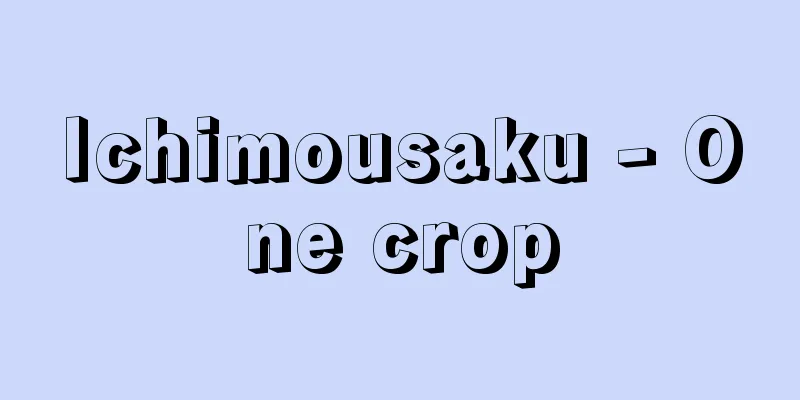Non-contentious case - Hishojiken

|
This refers to the court handling matters related to private relationships (civil and commercial) through simplified procedures rather than through normal litigation procedures. In principle, the handling of private relationships is left to the will of each individual, but there are some matters that require guardianship by the state. For example, it is necessary to supervise living relationships that have a large impact on the general public (supervision of corporate affairs and liquidation), to appoint and supervise guardians, property administrators, executors, etc. for those who cannot manage their own assets or live their lives, and to handle cases where voluntary negotiations regarding the formation of new living relationships cannot be reached (for example, designation of parental authority, division of inheritances). Among these matters, those that are under the jurisdiction of the court for historical reasons or policy considerations are non-contentious cases, and the Non-Contentious Cases Procedure Act (Act No. 51 of May 25, 2011, effective January 1, 2013) has been enacted as a general law to handle such cases. This Non-Contentious Cases Procedure Act is a complete revision of the old Non-Contentious Cases Procedure Act (Act No. 14 of Meiji 31) enacted in 1898 (Meiji 31). To make the new Act easier for the public to understand, provisions were established regarding basic procedural matters such as jurisdiction, parties and representatives, hearing and trial procedures, and appeals, and procedural guarantees were expanded for parties, such as participation, inspection and copying of records, procedures via telephone conference systems, and settlement. This law prescribes general rules for the procedure of non-contentious cases, as well as the procedures for civil litigation cases, public notice cases, and non-penal fine cases. Non-contentious cases are to be handled by the court with jurisdiction over the person's place of residence if the person has no address in Japan, and by the court with jurisdiction over the person's last place of residence if the person has no address in Japan (Article 5 of the same law). In non-contentious cases, procedural representatives must be attorneys-at-law, in addition to agents who are legally authorized to perform judicial acts. However, the court of first instance may, with its permission, appoint a person who is not an attorney-at-law as a procedural representative (Article 22 of the same law). The differences between civil litigation procedures and non-contentious procedures are as follows: (1) In civil litigation procedures, public oral arguments are held, whereas in non-contentious procedures, the formality of holding oral arguments is not adopted. (2) In civil litigation procedures, the formality is that only materials submitted by the parties are used as materials for the court (the principle of oral arguments), but in non-contentious procedures, the court can, if necessary, investigate basic materials for the trial by its own authority. (3) In civil litigation procedures, if there is dissatisfaction with a judgment handed down in a careful judicial format, two appeals, an appeal to the Supreme Court and an appeal to the Supreme Court, are permitted, whereas in non-contentious procedures, decisions are handed down in a simplified format, and appeals against these decisions are also in the form of an appeal against the decision. (4) With regard to the content of decisions in non-contentious cases, the court has a wide margin of discretion, and is quite free to revoke or change a decision once made if it is deemed unjust, but this is not the case with judgments in litigation cases. [Toshio Takeuchi, May 19, 2016] [Reference] |Source: Shogakukan Encyclopedia Nipponica About Encyclopedia Nipponica Information | Legend |
|
裁判所が、私人間の生活関係(民事・商事)に関する事柄を通常の訴訟手続によらずに、簡易な手続で処理するものをいう。私人間の生活関係の処理は、原則的に各自の意思に任されているが、国家の後見的介入が必要とされる事柄もある。たとえば、一般人に影響の多い生活関係を監督したり(法人の事務や清算の監督)、自分自身で財産の管理や生活ができない者のために、後見人、財産管理人、遺言執行者などの選任・監督をしたり、また、生活関係の新たな形成について自主的な協議が調わない場合の処理(たとえば、親権者の指定、遺産分割)をする必要などである。これらの事項のうち、沿革的理由ないし政策的配慮から裁判所の所轄とされているものが非訟事件であり、このような事件の処理のために、一般法として非訟事件手続法(平成23年5月25日法律第51号、平成25年1月1日施行)が制定されている。この非訟事件手続法は、1898年(明治31)に制定された旧非訟事件手続法(明治31年法律第14号)を全面的に見直したもので、新法では国民が理解しやすいように、管轄、当事者および代理人、審理および裁判の手続、不服申立て等の手続の基本的事項に関する規定を整備し、参加、記録の閲覧謄写、電話会議システム等による手続、和解等の当事者等の手続保障の拡充が行われた。 この法律は、非訟事件の手続についての通則を定めるとともに、民事訴訟事件、公示催告事件および過料事件の手続を定めている。非訟事件は、日本国内に住所がないときなどは居所地を管轄する裁判所が取り扱い、日本国内に居所もないときなどは最後に住んでいた住所地を管轄する裁判所が取り扱うこととされている(同法5条)。 非訟事件における手続代理人は、法令により裁判上の行為をすることができる代理人のほか、弁護士でなければ手続代理人となることができない。ただし、第一審裁判所においては、その許可を得て、弁護士でない者を手続代理人とすることができる(同法22条)。 なお、民事訴訟手続と非訟手続との差異は、次のとおりである。(1)民事訴訟手続では、公開の口頭弁論を開くのに対して、非訟事件手続では、口頭弁論を開くというたてまえを採用していない。(2)民事訴訟手続では、原則として当事者が提出した資料のみを裁判所の資料とするたてまえ(弁論主義)をとるが、非訟事件手続では、裁判の基礎資料につき必要があれば裁判所が職権で探知することができる。(3)民事訴訟手続では、慎重な裁判の形式によって下された判決に対して不服があるときは、さらに控訴、上告という二度の不服申立てを認められているが、非訟手続では、簡略な形式による決定が下され、これに対する不服申立ても抗告という形式になっている。(4)非訟事件の決定内容については、裁判所の裁量余地が広く、一度なされた決定も、不当と認めるならば取消し、変更がかなり自由に認められるが、訴訟事件の判決では、このようなことはない。 [竹内俊雄 2016年5月19日] [参照項目] |出典 小学館 日本大百科全書(ニッポニカ)日本大百科全書(ニッポニカ)について 情報 | 凡例 |
Recommend
Zigmo (earth spider) - Atypus karschi
A spider of the family Zygidae (illustration). It ...
Haidar Ali (English spelling)
1722‐82 A Muslim king who ruled Mysore in southern...
Bassano, G. (English spelling) BassanoG
…An Italian High Renaissance painter. His real na...
Okandate - Okandate
...This is a ceremony held once every 12 years fo...
Delicious - Delicious
An insect belonging to the family Tettigoniidae i...
Shimokawabe Choryu
Year of death: 3rd June 1686 (22nd July 1686) Year...
Olduvai Gorge - Olduvai Gorge (English spelling)
A canyon in the east of the Serengeti National Par...
Kushiera
… [Respiratory organs of invertebrates] Invertebr...
Friedrich Rittelmeyer
1872‐1938 German theologian. He was active as a Pr...
Playa - English spelling playa Spanish
A flat sedimentary plain found in the lowlands of...
Grimsby
The administrative capital of North East Lincolnsh...
Cassini, JD
…He was invited to join the newly established Aca...
Mastitis
What kind of disease is it? ●Main symptoms and pro...
Kanshinji Temple Golden Hall
...The main hall of Kakurin-ji Temple in Hyogo (a...
Methylotrophs
...In that case, they are called chemoorganic oxi...









